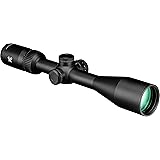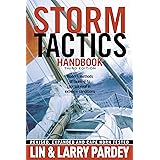Essential Wilderness Survival Tips: Navigating the Outdoors with Confidence
Do you ever wonder how to truly be prepared for unexpected challenges in the great outdoors? The accompanying video, featuring Eric from Moss Pawn and Gun and Scott Moore from Whack Outdoors, provides invaluable insights into fundamental wilderness survival tips that are applicable to any situation. These generic guidelines are designed to equip individuals with knowledge, transcending specific gear recommendations, which is often considered crucial.
A survival situation, by definition, is considered an unplanned event that necessitates immediate action. In essence, any unforeseen circumstance that turns for the worse falls under this critical category. Prior preparation, along with comprehensive training and suitable gear, is what ultimately determines the outcome of such an event, influencing whether it concludes favorably or unfavorably for those involved.
The Cornerstone of Preparedness: Proper Prior Planning
Scott emphasizes that the mountain will always be there next weekend, meaning that going unprepared is never advised. Significant risks are inherent in the wilderness, therefore, it is vital that endeavors into nature are met with thorough preparation. This adherence to “Proper Prior Preparation Prevents Poor Performance” is paramount for any outdoor activity.
When entering the wilderness, it is important to remember that visitors are always present in the animals’ natural habitat. Respect for these wild environments must always be maintained. This perspective helps in fostering a mindful and cautious approach to outdoor adventures, ensuring that one is continually aware of surroundings and potential hazards.
Effective Navigation: Doing Your Homework and Relying on Self
Harnessing modern technology for thorough research before embarking on any trip is highly recommended. Tools such as Google Earth and TerraServer can be utilized to gain an aerial view of an area. This allows for examination of terrain and identification of potential routes, which is crucial for successful navigation.
A common pitfall is relying solely on others, especially when traveling with more experienced individuals. However, personal responsibility for one’s own safety and knowledge must be assumed. This prevents a “vacation mindset” where crucial details might be overlooked, which is often a mistake when entering unfamiliar territory.
Consider a bear hunting scenario in Canada, as described in the video, where a guide becomes incapacitated. Being left alone in a vast wilderness without a sense of direction can quickly become a life-threatening dilemma. Therefore, a framework for orientation, obtained through personal due diligence and map study, is essential for survival, enabling one to find a way out when no one else is available to assist.
The Indispensable Value of Training Over Equipment
Training is consistently viewed as more important than the gear one possesses; it is suggested that “the more you know, the less you need.” The human mind is arguably the most potent and effective survival tool available to anyone. Investing in proper training before an emergency situation arises is therefore considered a wise decision, significantly increasing the likelihood of a positive outcome.
Furthermore, the concept of “two is one and one is none” is crucial for critical survival items. This means having backup resources for essentials like fire starters and compasses is always a good idea. A compass, for instance, might malfunction due to leaked liquid or a broken needle, as experienced by Scott in Colorado. Thus, carrying a primary item and a smaller backup item, perhaps in a pocket, ensures continued access to vital tools.
Beyond traditional tools, the ability to orient oneself without equipment is incredibly valuable. Knowing how to read natural signs, such as the position of the sun or the direction of shadows, allows for orientation even if a compass is lost or damaged. This fundamental skill is developed through training and observational practice, becoming an instinct in challenging circumstances.
Strategic Decision-Making: Timing is Everything
Making timely and informed decisions is paramount in any outdoor emergency. A good decision that is made too late is often as detrimental as a poor decision. Therefore, a practiced methodology for decision-making, which adapts to changing conditions, must be developed.
An illustrative example involves a group hike where time constraints dictate available options. If a wide loop trail takes an hour longer and darkness approaches at 7 PM, a decision about which path to take must be made well before a 6:30 PM buffer zone. Once that crucial timeframe has passed, the longer loop is no longer a viable or safe option. Group capabilities must also be assessed, as a group’s pace is determined by its slowest member, which heavily influences decision-making in the field.
Interpreting Nature’s Cues: Practical Weather Forecasting
The weather is often considered the most significant dictator of conditions in the outdoors, influencing decision-making timelines. It is therefore highly beneficial to learn some of nature’s inherent weather forecasting indicators. While technology offers convenience, its availability is not always guaranteed in remote areas.
Simple observations can provide valuable insights into impending weather changes. For instance, when campfire smoke hangs low in a valley, it typically indicates low pressure, which often signals incoming adverse weather. Conversely, smoke rising straight upwards suggests high pressure, usually associated with clear, favorable conditions. Similarly, the appearance of leaves on trees, often turning upward before a rainstorm, is another natural sign to observe.
Another easy indicator relates to dew on the grass in the morning. If the grass is heavily saturated with dew, it is understood that much of the atmospheric moisture has already settled, suggesting rain is unlikely within the next few hours. However, if the ground is dry, it implies that moisture remains in the sky and precipitation could occur later in the day. These basic observational skills become indispensable when modern weather forecasts are inaccessible.
The Essential Survival Kit: The Five C’s and Accessibility
A well-prepared survival kit is a cornerstone of outdoor survival. David Canaberry’s concept of “The Five C’s of Survivability” provides an excellent framework for assembling one: a **C**utting tool, **C**ordage (rope), a **C**ontainer (for water), **C**over (shelter material), and **C**ombustion (fire starter). These elements collectively address fundamental needs such as fire building, water boiling, and basic shelter construction.
However, the kit’s effectiveness hinges on its accessibility. Having all these items neatly packed away at the bottom of a large backpack becomes useless if one becomes separated from the pack. Therefore, keeping essential items, like a small pocket knife, a compact compass, a reliable lighter, and some fire-starting tinder, directly on one’s person is crucial. Creating a lanyard or necklace with a fire striker, signaling whistle, and small compass ensures these critical tools are always within reach, even during a quick detour like a “200 yards off the road” scenic view.
It must also be stressed that possessing a kit is only half the battle; knowing how to proficiently use each item is equally important. Even the most expensive and comprehensive survival kit is rendered ineffective without the requisite skills and training to operate its components effectively. Therefore, consistent practice with one’s gear under various conditions is highly recommended.
Staying Oriented: Avoiding the Peril of Being Lost
Maintaining orientation in relation to identifiable landmarks like mountain tops, rivers, or roads is fundamental for wilderness survival. Disorientation directly translates to being lost, which can quickly lead to panic and poor decision-making. Military studies have shown that it is virtually impossible for a human being to walk in a truly straight line without external assistance; typically, a person will drift about one mile to the left or right over a three-mile walk. Interestingly, right-handed individuals are often observed to drift to the right.
The “get home-itis” phenomenon is a significant danger that often leads to bad decisions. When individuals are desperate to return home, they may abandon trails or attempt to bushwhack through unfamiliar terrain. This impulse, driven by fear of spending a night in the woods, frequently compounds a situation. Being lost, in itself, is not inherently fatal; rather, a series of poor decisions made while lost is what ultimately jeopardizes safety. Thus, if on a trail all day, it is nonsensical to suddenly cross a stream and climb a mountain in an attempt to shorten a route, as this action significantly increases risk.
Acknowledging Limitations: The Ultimate Survival Mandate
A crucial wildcard tip for all aspiring outdoors enthusiasts is to never overestimate personal capabilities or training levels. It is imperative to understand one’s current standing within any training regimen, whether as a bushcraft enthusiast, a fisherman, or a hunter. Recognizing these limits is considered one of the most important considerations in outdoor survival.
While ambition to take on greater challenges is natural, it must be approached responsibly and with adequate preparation. Attempting to climb a huge mountain when only familiar with hill-level terrain is an unnecessary risk. Therefore, it is strongly advised that individuals never push themselves beyond what their current training and experience can safely manage. This approach allows for progressive growth in skills while minimizing potential dangers in a survival situation.











